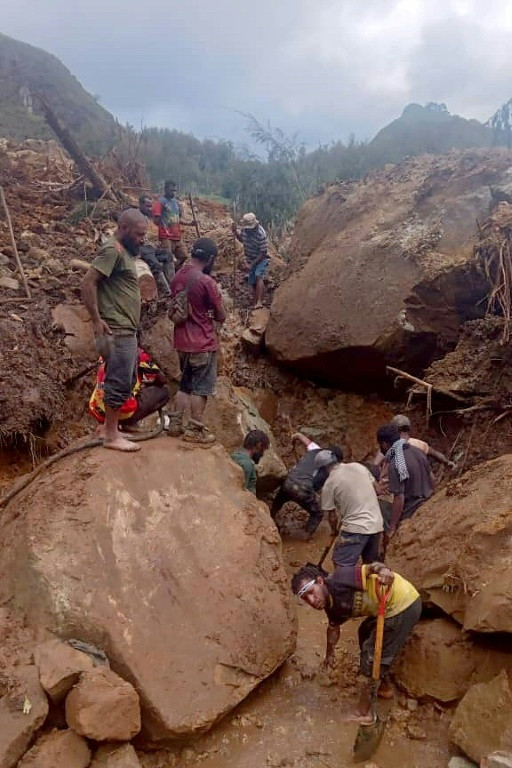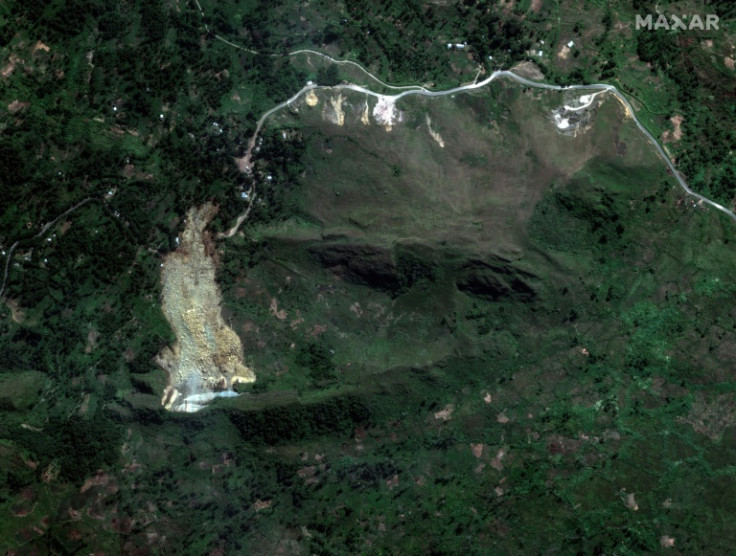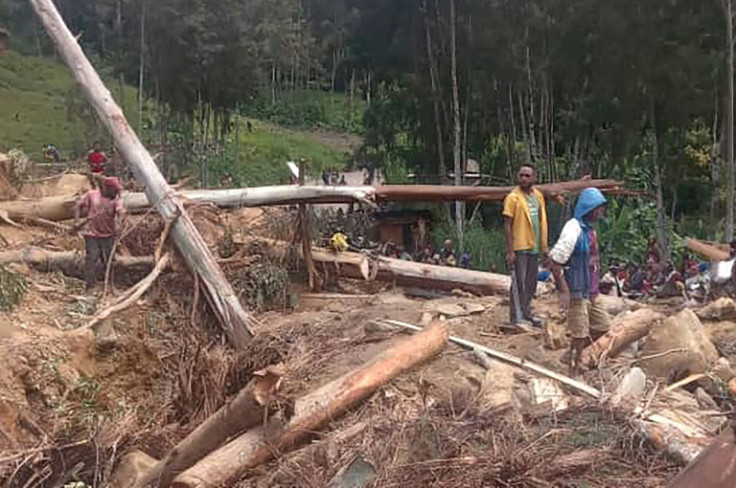Aid Reaches Papua New Guinea Landslide Site

Supplies of food and medicine began arriving at the scene of a deadly landslide in Papua New Guinea Wednesday, with aid workers discovering children rendered mute by the shock of the disaster.
Papua New Guinea's government estimates that as many as 2,000 people may be buried underneath a massive landslide that struck a thriving highland settlement in Enga province in the early hours of May 24.
Only six bodies have so far been pulled from the mountain of churned-up earth after days of frantic digging with makeshift tools.
Difficulties getting aid and supplies to the site -- and the speed of the government response -- has stoked a mix of desperation and frustration on the ground.
Community leader Miok Michael told AFP that 19 of his "family members and relatives" were missing and feared dead.
"The relief support and donations are slowly reaching the affected site," said Michael, who recently visited the disaster zone.
"But displaced people are still crying and calling for help. There is no proper house for them to sleep, all their houses were buried."
With rescue teams abandoning hope of finding survivors under the metres of mud and rubble, the community has started to count the emotional and physical cost.
Mourning locals have started carrying the dead away in immense "haus krai" funeral processions, collective outpourings of love and grief that can last for weeks.
Images showed a group of men carrying a wooden casket down the forested valley on their shoulders as scores of mourners trailed behind them, wailing with despair.
Aid groups fear children will bear the brunt of the catastrophe, estimating that 40 percent of residents in the area are younger than 16.
"What we are hearing is that, because of what they saw and experienced, many of the children have stopped talking," Justine McMahon from CARE Papua New Guinea told AFP.
Niels Kraaier from UNICEF Papua New Guinea said workers were aware of nine orphaned children.
UNICEF said it had started distributing rudimentary hygiene kits of buckets, jerrycans and soap, while World Vision said food, shelter, blankets and mosquito nets remained immediate needs.
However, full-scale rescue and relief efforts have been severely hampered by the site's remote location, nearby tribal violence and landslide damage that has severed major road links.
The collapse of bridges along the sealed road to the site has forced lengthy detours for some aid convoys.
Papua New Guinea's military tried for days to bring heavy earth-moving equipment to the site.
But, with a series of bridges in a state of disrepair or damaged by earlier floods, they have now abandoned that plan and will source equipment from mines and businesses.
That equipment will arrive at the landslide by Thursday at the "latest", UN migration agency official Serhan Aktoprak told AFP.
Provincial leaders have implored the government to declare a national emergency that would draw attention to their plight and free up resources.
"I am not equipped to deal with this tragedy," provincial administrator Sandis Tsaka told AFP.
Prime Minister James Marape is yet to visit the remote pocket of Enga province more than five days after the landslide.
He has stayed in the capital Port Moresby, where his government is trying to fend off a no-confidence motion that could sweep it from power.
There are concerns this political manoeuvering has drawn attention away from what could be one of the country's worst natural disasters.
Marape told parliament on Wednesday that the village of Yambali was "no more".
"Nature, through a disastrous landslip, submerged or covered the village and from our initial estimation over 2,000 people would have perished in this disaster."
"In this year, we have had extraordinary rainfall that has caused flooding in river areas, sea level rise in coastal areas, and landslips in a few areas," Marape said.
Papua New Guinea is one of the world's most disaster-prone regions and landslides are extremely common in its highlands.
Geologists believe recent heavy rain may have contributed to the slide.
"Papua New Guinea sits right on a plate boundary, where these large, rigid parts of the earth plough into each other," University of Adelaide geologist Alan Collins told AFP.
"This creates mountains, steep slopes and other extreme topography.
"You have these steep slopes located in an area of heavy rainfall, and this can rot the minerals in the rocks, and gradually weaken them."
The World Bank and others have warned that landslides were likely to increase in Papua New Guinea due to a growing population and uncontrolled land use.
Scientists have also warned that climate change will cause more extreme rainfall across most parts of the world.




© Copyright AFP 2025. All rights reserved.





















